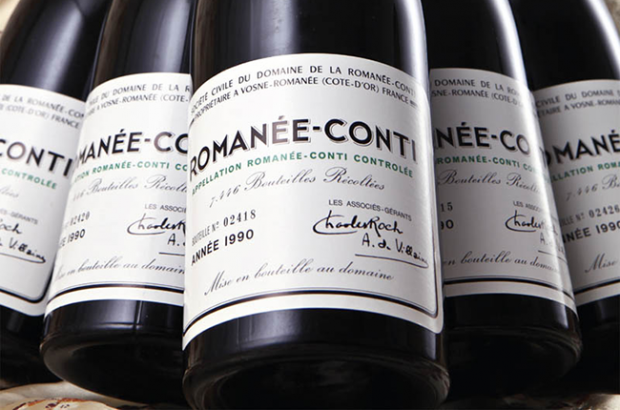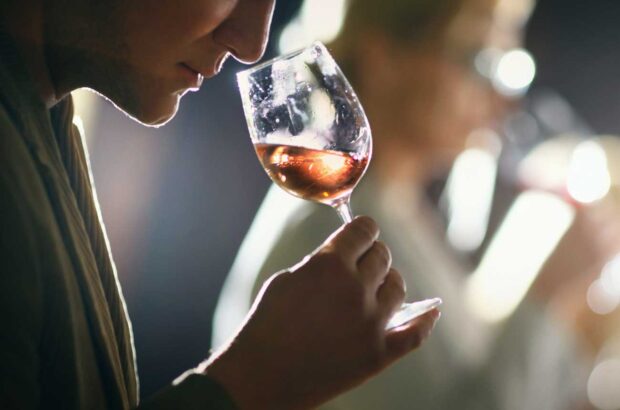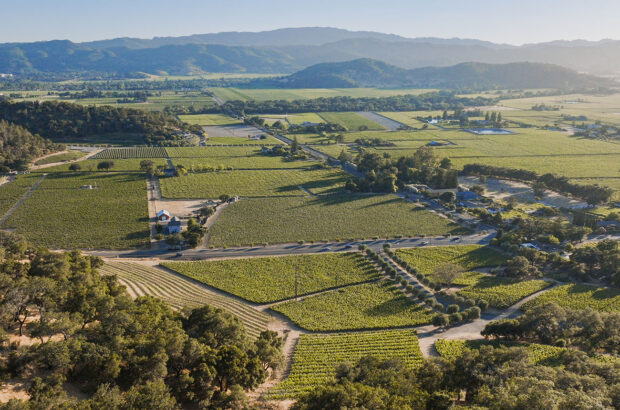To many people Cloudy Bay is Marlborough, and winemaker Kevin Judd, at the famous New Zealand winery is the man behind its great Sauvignon Blancs, writes Penny Boothman.
Would we be drinking Sauvignon Blanc if it weren’t for Cloudy Bay? Would we be aware that New Zealand can produce some of the world’s most pure, expressive varietal wines. Would we even know Marlborough existed? One wine catapulted a grape variety, a region, indeed a country to fame. But how did it all come about? The Jimmy Watson Trophy is the most prestigious award in the Royal Melbourne Wine Show, which Cloudy Bay’s founder, David Hohnen, won with his Cape Mentelle Cabernet Sauvignon from Margaret River in 1982 and 1983. Half a dozen New Zealand winemakers went to visit Cape Mentelle, and handed over a few bottles of Sauvignon Blanc to thank Hohnen for his time. ‘He was so blown away by the wine, the next year he came over to find out where it came from. Fortunately, he bumped into me on the way round,’ says Cloudy Bay chief winemaker Kevin Judd.
https://www.decanter.com/wine-news/cape-mentelle-founder-launches-family-business-97039/
But Hohnen did not set himself an easy task. The year he founded Cloudy Bay coincided with the New Zealand vine pull scheme of 1986/87, and the government was paying growers $5,000 an acre to uproot their vineyards. At the same time, interest rates soared to 25%. ‘It was a pretty tough time to go into business,’ winemaker Kevin Judd recalls. ‘A lot of people told David to go back to Australia and forget about it while he still had a shirt on his back!’
Cloudy Bay (and Cape Mentelle) has been part of the LVMH (Louis Vuitton Moët Hennessy) empire for most of its life, and Judd credits the owner of Krug, Veuve Clicquot and Yquem with taking a long-term attitude to quality. ‘They’re only interested in top quality, not in any mass-market wines. So we’ve never been encouraged to grow exponentially or to set up second labels. Since day one we’ve been allowed the freedom of staying just in the premium end of the market and making wine as we want to make wine.’
https://www.decanter.com/premium/veuve-clicquot-producer-profile-409736/
Cloudy Bay has achieved the rare feat of producing original, distinctive wines while being owned by a large, powerful multi-national corporation. However, there is now much more of that wine than there would otherwise have been. ‘When I was first employed I was told we wouldn’t get any bigger than 750 tonnes of grapes. Now it’s about 1,200 a year. We were pretty small initially, but the philosophy’s the same now. We haven’t got bigger tanks, we’ve got more tanks. We haven’t got bigger pumps, we’ve got more pumps, and more people. We haven’t got the big company mentality.’
This is one thing that makes Cloudy Bay unique. Just as there are no second wines, there is also no reserve tier: all the wines are of the same quality level. But another point to note is that the icon wine, the Sauvignon Blanc, occupies the lowest price point in the portfolio.’
New Zealand Sauvignon is known for its intense aromatics, purity of fruit, freshness and crisp palate, but within that there are a number of variations on a theme. ‘Some are more sweaty, some greener, some riper – everyone’s got their own take,’ says winemaker Kevin Judd. ‘But we’ve always endeavoured to make a wine that’s not too much of anything, so it’s got balance.’
Finding the right balance is a matter of fine tuning over time, and the style of Cloudy Bay has evolved over the years. ‘We believed at the start we were making good wine but we were aiming to get more ripeness. Perhaps in the 1990s we went too far in the other direction – we did too much leaf plucking, and in trying to achieve that riper flavour we perhaps lost a bit of zing. Now I think we’re making a good balance between the two, the wines have tropical fruit but also the clarity that Marlborough’s known for.
‘At the end of the day it’s all about viticulture and preserving the flavours from the vineyard,’ he continues. ‘So it will always be different from vintage to vintage. We don’t tame it with winemaking. Marlborough Sauvignon Blanc speaks about the vintage in its own right.’
The love it/hate it Te Koko is from the same variety as the signature white, but is something of an evil twin. ‘It’s made in a totally different mould,’ explains winemaker Kevin Judd. ‘It’s treated as though it’s a Chardonnay.’ Barrel-fermented and spending several months on yeast lees, the intense, almost pungent flavours make this a wine which divides people, as evidenced by its poor showing in a recent Decanter panel tasting while being lauded in the same issue by Steven Spurrier.
While Sauvignon may have inspired the inception of Cloudy Bay and remains just over half of its total production, winemaker Kevin Judd believes New Zealand has more to offer than this one variety. ‘There seems to be a bit of a buzz about Pinot Gris at the moment. I’m personally very interested in that variety, I think it’s got great potential. We imported some Pinot Gris clones from Alsace about 10 years ago, but once they got through quarantine we ended up with two vines – so it’s taken a long time to get it into production!’ It’s also worth keeping an eye out for Cloudy Bay’s aromatic Riesling and concentrated Gewurztraminer, little of which makes it further than Australia.
White varieties aside, Pinot Noir is the grape of the moment in New Zealand.Cloudy Bay recently held its seventh annual ‘Pinot at Cloudy Bay’ event, a blind tasting of 18 of the world’s top Pinot Noirs from a single vintage which charts Cloudy Bay’s progress. The event isn’t so much a competition as an exercise in studying styles and trends in Pinot from around the world. The 2003 vintage was tasted this year and, unsurprisingly, many southern hemisphere wines fared better than their northern counterparts in terms of elegance and perfume.
‘There’s immense interest in New Zealand Pinot and we believe there’s great potential for Marlborough that’s yet to be realised,’ says Judd. ‘Marlborough’s been a bit slow off the mark, but people are starting to explore new sites, new clones and so on.’ Cloudy Bay plans to double production of its savoury, characteristically red berry Pinot in the next five years.
‘I guess, if anything, we’re hoping as time goes on to make wines with a bit more mid-palate sweetness and a little more weight. But really it’s been a matter of experimenting with every parameter that we can to see what suits the fruit we have, and our soils and our climate.
‘It’s a combination of the maritime influence, high sunshine hours and the fact that we don’t get a lot of heat – in Marlborough it rarely gets above 30?C. And we’ve got this high UV level so we get the ripeness with this incredible retention of flavour.’
These fortuitous conditions may be prefect for growing grapes for quality wine, but the volume they are able to produce will always be tiny in comparison with the rest of the wine world. This is never going to be a land of cheap plonk. ‘We don’t have the areas where you can grow grapes reliably for high crop levels,’ explains Judd. ‘We get a lot of disease pressure – our viticulture has to be spot on. We cannot grow cheap grapes.’ Hence premium quality wines such as Cloudy Bay that shot the country to fame also represent the future of the industry.
From ambitious beginnings, Cloudy Bay has led the charge for New Zealand wine over more than 20 years. It is now a benchmark for Sauvignon producers all over the world. But Cloudy Bay does not begin and end with Sauvignon Blanc, and as new varieties, new sites and new styles are being explored, New Zealand’s story is only just beginning.
Judd AT A GLANCE
- Born: New Forest, UK, 1959
- Family: Wife Kimberley,
- sons Kohen and Alex
- Education: B App Sci (Oenology), Roseworthy Agricultural College, South Australia
- Career: Chateau Reynella, South Australia; Selaks Wines, Auckland; Cloudy Bay (1985 onwards)
- Second love: Photography
- Dream vineyard: ‘I’ve been dreaming of planting my small, north-facing hillside in the Omaka Valley (Marlborough) for a few years now – I’ll do it one day!’
He says: ‘Fruit sourced from vineyards that are well sited and managed will often have an ideal natural balance in terms of juice composition and flavour, so will allow winemaking techniques with minimal intervention.’
They say: ‘Cloudy Bay has a special place in the Sauvignon firmament. It was – and largely remains – a benchmark for many Sauvignon makers, New World and Old.‘
Peter Leske, group winemaker, Nepenthe
Written by Penny Bootham







